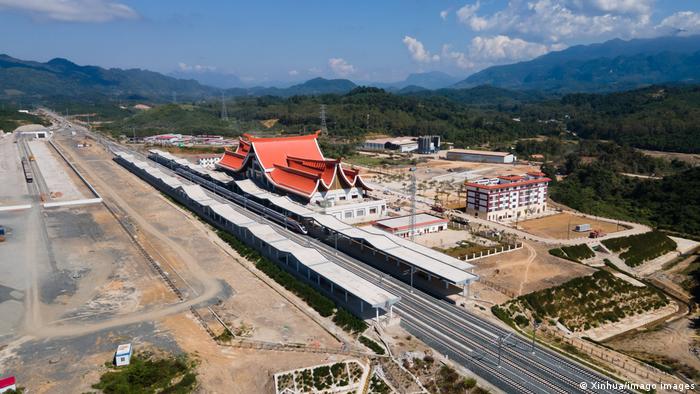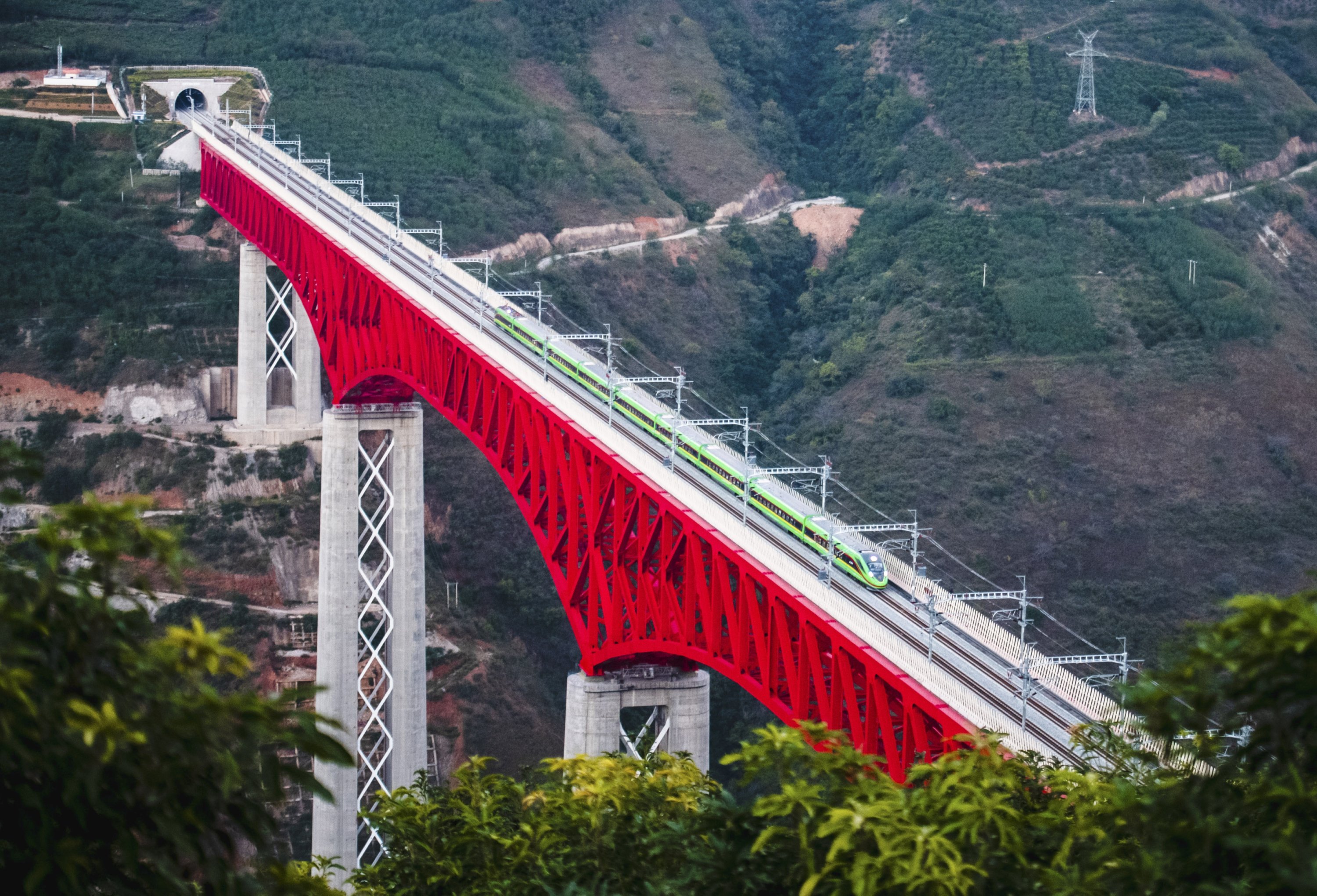The Laos economic situation is becoming worse despite the enormous Chinese debt.

The escalating debt crisis that is hurting the nation’s finances and putting Laos perilously near default has put the country’s economy on the verge of collapse. The Southeast Asian country’s Statistics Bureau said in June that inflation had reached a 22-year high of 23.6%, making basic products more difficult to get and decreasing people’s purchasing power.
Laos’ domestic and international debt has risen to more than $14.5 billion (€14.2 billion), according to the World Bank. Anushka Shah, vice president and senior rating officer at Moody’s Investors Service, declared categorically in the middle of June that “it is on the verge of default.”

According to analysts, Laos’ foreign exchange reserves are so low that there is no way out for the tiny, landlocked country without outside intervention to help it pay its debts. China, which has provided money to Laos to build infrastructure projects including hydropower plants and railway lines, is responsible for almost half of the country’s foreign debt.
Now that Vientiane is in trouble, attention is turning to Beijing’s response to the issue and whether it would support providing any kind of rescue or debt forgiveness. Alarming inflation rates in Laos are the most recent indication that the country’s debt-ridden economy is still being battered by a financial storm.
The nation was severely affected by the pandemic even though the economy was booming at 6-7% annual GDP growth for much of the decade before the coronavirus epidemic. “The modest size of Laos’ economy makes it far more susceptible to shocks.” ” Any attempts at expansion have been seriously hindered by the COVID-19 outbreak.” A fellow at the Center for Strategic and International Studies (CSIS), a research group with headquarters in Washington.
The 7 million-person landlocked nation is primarily reliant on imports from and exports to commercial partners in Asia due to its tiny size. The epidemic has increased inflationary pressure on the nation by upsetting supply networks and driving up food and gasoline costs.
“The war in Ukraine and other reasons are making this issue worse right now, and some Lao people are skipping meals to deal with circumstances beyond their control.” While attempting to return to normal, people have challenges and may require assistance. In a recent news release, Alex Kremer, the Laos country manager for the World Bank, stated
China’s debt trap
Laos’ choice to incur significant debt to finance significant infrastructure projects is another aspect that contributed to the crisis’s escalation. Whether it is train links or the hydropower that Laos is capable of producing, Murphy said, “I think Laos is at the mercy of becoming a part of China’s economic objectives.”

In recent years, Laos has established itself as the hub of expanding commercial, economic, and infrastructure integration in the Mekong subregion. Its dams supply its more populated neighbors with power, and its expanding road and rail network may link the area’s expanding businesses. According to Chinese official media, Xinhua, China is now one of the top foreign investors in Laos, with projects totaling more than $16 billion.
The most recent major undertaking, the $5.9 billion China-Laos railway connecting Vientiane to the Chinese border, is an important pillar of Beijing’s massive, multi-billion dollar Belt and Road Initiative to create infrastructure. Poorer countries like Laos, however, run the risk of falling into China’s “debt traps,” which, according to critics of Beijing’s global expansion and infrastructure-focused foreign policy, allow Chinese investors to seize control of important national assets when debtor nations cannot repay the loans.
The overall amount of Laos’ public debt to China is estimated to be roughly $12.2 billion by AidData Lab, a research center at William & Mary’s Global Research Institute, which is significantly more than the World Bank estimate.
Toshiro Noshizawa, professor at the Graduate School of Public Policy at the University of Tokyo, said: “Laos undoubtedly confronts enormous and alarmingly serious economic and financial issues, but I don’t think China will allow Laos to default.” While the number of debt commitments alone would seem to indicate that default is unavoidable, he cautioned that such straightforward forecasts would be impossible due to geo-economic variables.
To strengthen economic relations throughout Southeast Asia, China has committed more than $800 billion since 2013 to its Belt and Road Initiative, with Laos serving as a vital ally. In light of this, a Lao loan default might harm China’s standing as a reliable partner in the developing world, particularly in this area.
The stakes are too high for China, both politically and economically. In the big picture, Laos has a lot of debt, but it’s not as much as other nations, so I believe it will be willing to step in.
Laos’ balancing act between the powers
Laos is caught in a severe power struggle as Beijing’s hold over the country tightens and the inflation rate rises. There are many more important commercial partners for Laos besides China. The nation has a strong history of juggling the interests of rival diplomatic allies. In contrast to Vietnam, which is currently regarded as Laos’ most significant security partner, Japan has long been the country’s greatest bilateral assistance provider.

Despite its financial difficulties, Vientiane has so far refrained from approaching its foreign lenders about renegotiating its debt. The nation opted to borrow fresh money from Beijing during the COVID epidemic rather than apply for loans from multilateral lenders.
Why China won’t let Laos go into default
There is probably no way out of Laos’s worsening economic and financial woes without some kind of Chinese rescue or debt forgiveness. The tiny Southeast Asian nation is covered in warning signs that are all blinking red. Compared to this time last year, the value of the national currency, the kip, has decreased by around a third. In June, inflation reached 23%, the highest level in decades. The landlocked nation is now experiencing gasoline shortages in several areas.
A new trade minister and central bank governor were appointed by the communist-run administration in late June after much huffing and puffing. A few emergency steps have prevented some economic issues from getting worse. The nation’s foreign debts have increased to almost $14 billion, or 88% of its GDP .
In addition to the Lao state’s one-third interest in the $5.9 billion China-Laos railway, a mega project that opened in December despite doubts about the line’s financial feasibility, roughly half of that sum is owed to China.
Last year, Vientiane just about managed to meet its yearly debt obligations. The World Bank estimates that the Lao state had just that much in foreign reserves at the beginning of this year and that it must now pay that amount in debt servicing every year until 2025. Additionally, it equates to almost half of all domestic money gathered annually.
To restructure the debt that it does not owe to China, Laos might apply to the International Monetary Fund (IMF), which would not have an impact on its financial obligations to Beijing. However, Laos, however, “would almost definitely come under pressure to decrease government expenditure, reduce corruption, and enhance domestic income to receive an IMF rescue.”
But up until now, it has refrained from approaching its foreign lenders to renegotiate its debt. It opted to accept fresh loans from Beijing during the COVID-19 epidemic rather than look for help from multilateral lenders.

Alternately, the Lao state may give Chinese investors a bigger interest or more influence in infrastructure projects in place of partial payback. In addition, Laos has also been known to give over state-owned land to Chinese companies in the past in return for debt forgiveness. Renegotiating the payback plan on Chinese terms would be an additional choice. This would probably result in longer payback terms but higher interest rates.
Edited by Prakriti Arora




